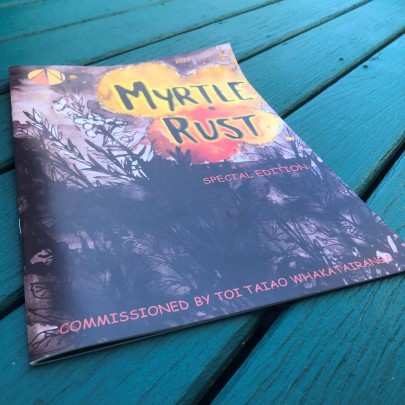Impacts of engagement through art
Artistic practices can enable diverse ways of understanding and responding to new environmental threats. They can also allow people to get in touch with and express complex emotions and uncertainties associated with socio-ecological changes.
Toi Taiao Whakatairanga, a project within NRT’s Mobilising for Action theme, commissions artists from around Aotearoa and from different artistic disciplines to generate a space (or ‘contact zone’) where different knowledges and cultures can recognise one another. Contact zones can enable people, from scientists to artists to the public, to meet and share diverse perspectives that do not necessarily need to be ‘wrong’ or ‘right’.
Members of the Mobilising for Action team, along with our own Gradon Diprose, set out to explore how art practices and interventions facilitated by Toi Taiao Whakatairanga had created spaces for engagement with different understandings of the relationships between people and te taiao (the environment), with a particular focus on myrtle rust and kauri dieback. This research has recently been published in a special issue of Knowledge Cultures (a multidisciplinary journal with a humanities and social sciences) that exclusively features work from the Mobilising for Action team.

The art projects explored in the publication include: a documentary featuring Graeme Atkins (former Department of Conservation ranger); a virtual reality game that educates participants about myrtle rust; a four-chapter graphic novel for young people about myrtle rust; and a 4-minute loopable video work titled Te Tukumate (The Pathogen). The authors analysed the narratives that emerged from these projects, bringing together standard social science methods (semi-structured interviews) with ‘art as method’ practices. Using this analysis, they identified three ideas across the projects’ narratives: building and maintaining relationships between people and te taiao; greater collaboration across art, science and wider communities; and taking action amidst uncertainty.
This article, as well as others from the special issue, are in the process of being curated in an open-access format. In the meantime, you can request a copy of the article from Gradon (DiproseG@landcareresearch.co.nz) and follow these links to learn more about the Toi Taiao Whakatairanga and Mobilising for Action.
